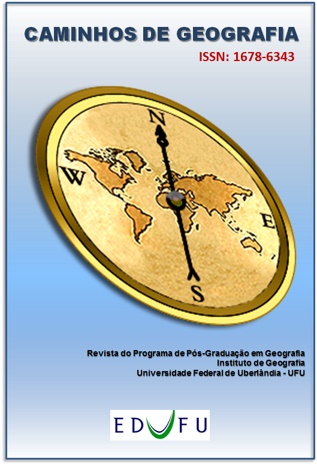PRODUÇÃO DO ESPAÇO GEOGRÁFICO: PROBLEMAS AMBIENTAIS E SEGREGAÇÃO SOCIOESPACIAL EM RONDONÓPOLIS (MT)
DOI:
https://doi.org/10.14393/RCG228356193Keywords:
Desigualdade espacial, Desigualdade ambiental, Relação sociedade-naturezaAbstract
It has aimed, in this work, to discuss the relationship of urban environmental problems and the socio spatial segregation in three neighborhoods of Rondonopolis-MT: Jardim Carlos Bezerra I and II and Parque Residencial Buriti. Throughout environmental problems surveys with photographic cameras in fieldworks in the areas, it has been searched to think about the following aspects: a) Do the distinct agents of urban space production elapse in quantity/quality of environmental problems? b) Do the allotments with lower income population predominant have higher quantity and worse environmental problems? c) Do the environmental problems cause are related to the social segment that occupies or the fragilities of natural elements front to land use? The results showed to: a) distinct agents produces distinct quantities and qualities of environmental problems; b) the neighborhoods with lower income population suffers with more and worse problems; c) the major or minor susceptibility to natural fragilities is directly linked to the technical apparatus that the objective material condition allows to access. Thus, who produces the environmental problems are not the ones that suffer them. And that the capitalist space production brings with itself the production of, simultaneously, special and environmental inequalities.
Downloads
Downloads
Published
How to Cite
Issue
Section
License
Autores que publicam nesta revista concordam com os seguintes termos: a) Autores mantém os direitos autorais e concedem à revista o direito de primeira publicação, com o trabalho licenciado sob a Creative Commons Atribuição-NãoComercial-SemDerivações 4.0 Internacional. b) Autores têm permissão e são estimulados a publicar e distribuir seu trabalho online (ex.: em repositórios institucionais ou na sua página pessoal), já que isso pode gerar alterações produtivas, bem como aumentar o impacto e a citação do trabalho publicado. c) Em virtude de aparecerem nesta revista de acesso público, os artigos são de uso gratuito, com atribuições próprias, em aplicações educacionais e não-comerciais.











